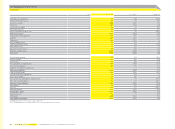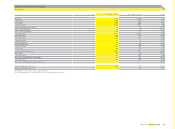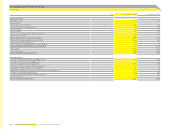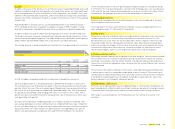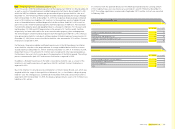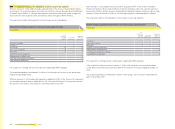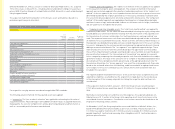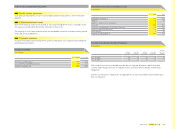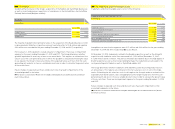Reebok 2008 Annual Report Download - page 164
Download and view the complete annual report
Please find page 164 of the 2008 Reebok annual report below. You can navigate through the pages in the report by either clicking on the pages listed below, or by using the keyword search tool below to find specific information within the annual report.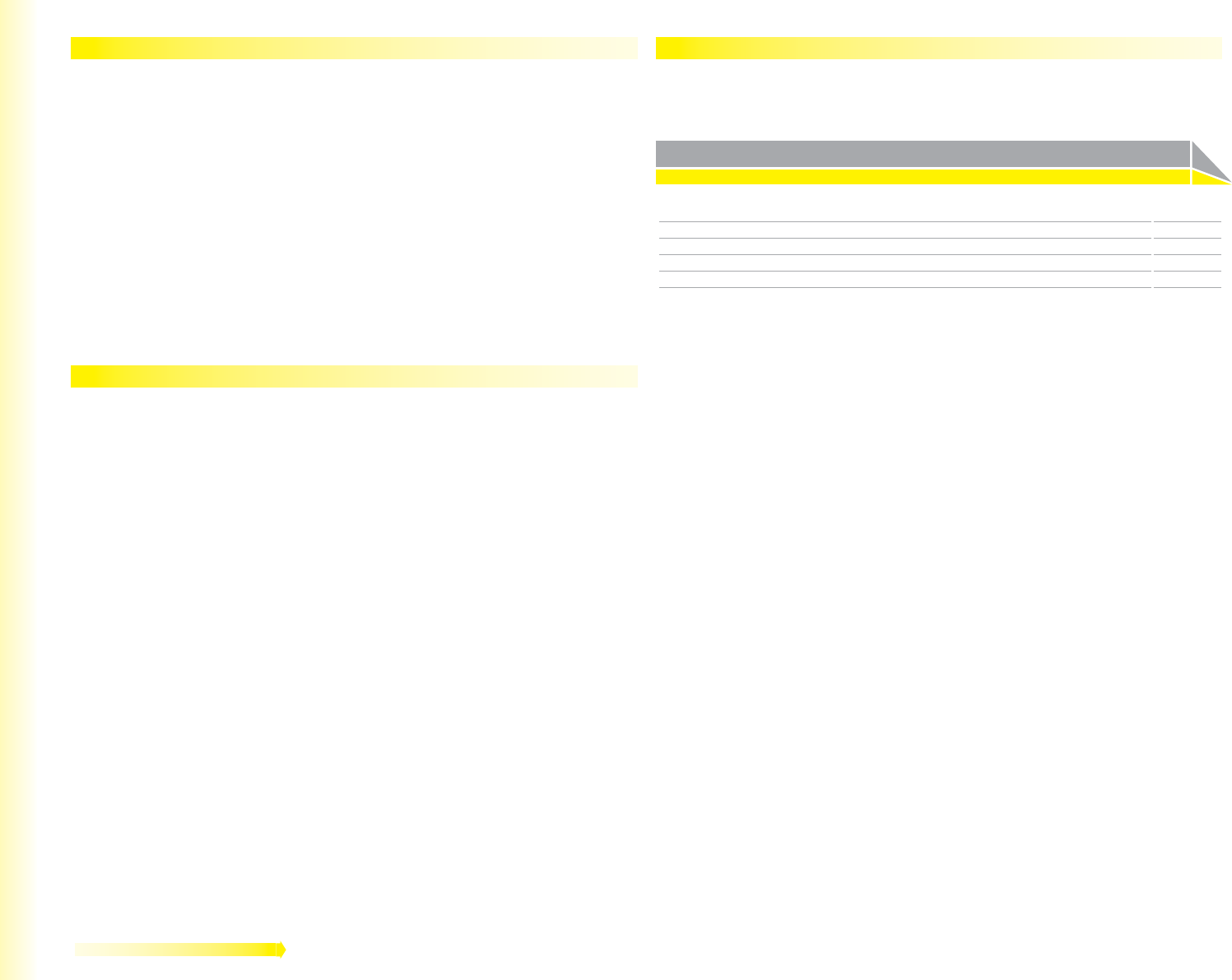
160 Consolidated Financial Statements Notes
Impairment
In the event that facts and circumstances indicate that the cost of non-current assets (fi nan-
cial and non-fi nancial assets) should be impaired, an evaluation of recoverability is performed.
An impairment loss is recognised in the income statement if the carrying amount exceeds the
recoverable amount. If there is an impairment loss for a cash-generating unit, fi rst the carrying
amount of any goodwill allocated to the cash-generating unit is reduced, and subsequently the
other assets of the unit are reduced pro rata on the basis of the carrying amount of each asset
in the unit.
Irrespective of whether there is an impairment indication, intangible assets with an indefi nite
useful life and goodwill acquired in business combinations are tested annually for impairment.
An impairment loss recognised in goodwill is not reversible. With respect to other assets,
an impairment loss recognised in prior periods is reversed if there has been a change in the
estimates used to determine the recoverable amount. An impairment loss is reversed only
to the extent that the asset’s carrying amount does not exceed the carrying amount that would
have been determined (net of depreciation or amortisation) if no impairment loss had been
recognised.
Leases
If substantially all risks and rewards associated with an asset are transferred to the Group under
fi nance lease agreements, the asset less accumulated depreciation and the corresponding liabil-
ity are recognised at the fair value of the asset or the lower net present value of the minimum
lease payments. Minimum lease payments are apportioned between the fi nance charge and the
reduction of the outstanding liability. The fi nance expense is allocated to each period during the
lease term so as to produce a constant periodic interest rate on the remaining balance of the
liability.
Under operating lease agreements, rent expenses are recognised on a straight-line basis over
the term of the lease.
Identifi able intangible assets
Acquired intangible assets are valued at cost less accumulated amortisation (except for assets
with indefi nite useful lives) and impairment losses. Amortisation is calculated on a straight-line
basis with the following useful lives:
Useful lives of identifi able intangible assets
Years
Trademarks indefi nite
Software 3 – 5
Patents, trademarks and concessions 5 – 15
In 2008, the adidas Group determined that there was no impairment necessary for any of its
trademarks with indefi nite useful lives.
The recoverable amount is determined on the basis of fair value less costs to sell, which are cal-
culated with 1% of the fair value. The fair value is determined in discounting the royalty savings
after tax and adding a tax amortisation benefi t, resulting from the amortisation of the acquired
asset (“relief-from-royalty method”). These calculations use projections of net sales related
royalty savings, based on fi nancial planning which covers a period of fi ve years in total. Royalty
savings beyond this period are extrapolated using steady growth rates of 1.7% (2007: 2.5%).
The growth rates do not exceed the long-term average growth rate of the business to which the
trademarks are allocated.
The discount rate is based on a weighted average cost of capital calculation considering a fi ve-
year average debt /equity structure and fi nancing costs including the Group’s major competitors.
The discount rate used is an after-tax rate and refl ects the specifi c equity and country risk. The
applied discount rate is 8.3% (2007: 7.5%).
If expenditures for internally generated intangible assets qualify for recognition, these are not
expensed as incurred.




